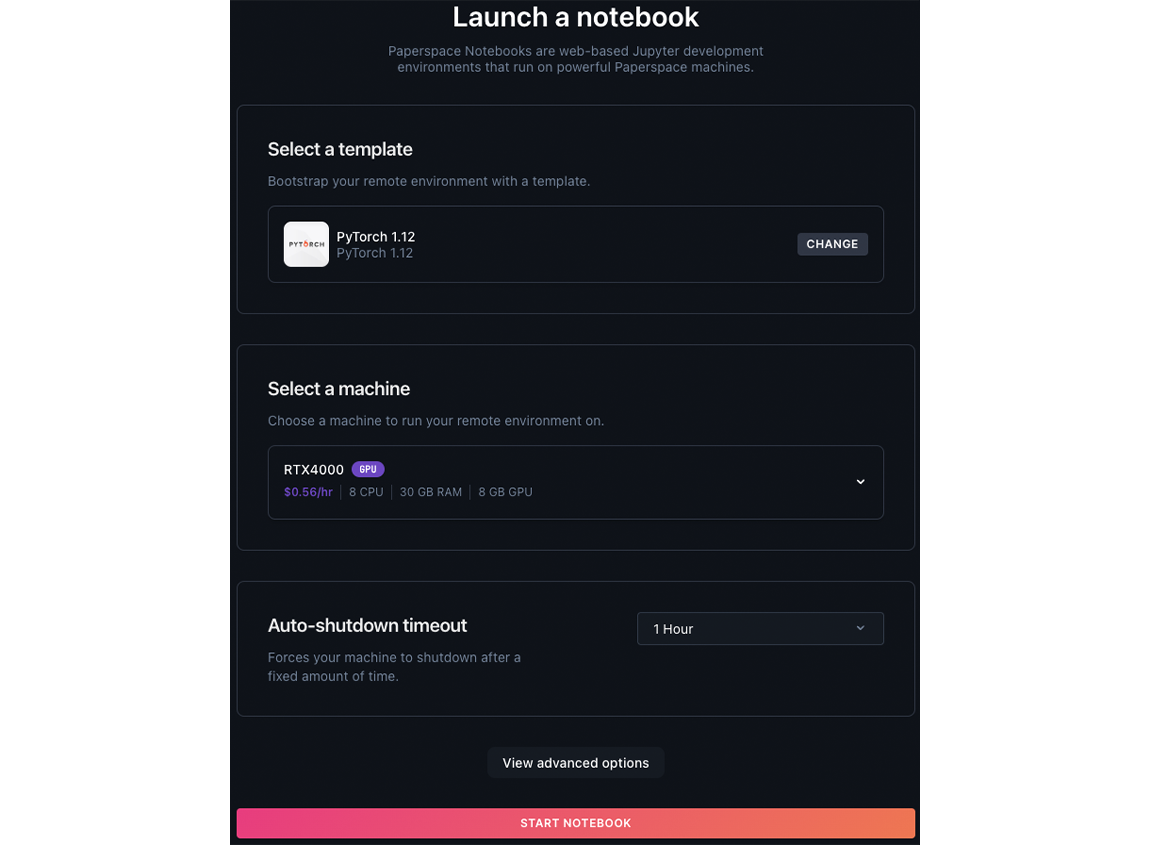Create a Jupyter Notebook with Templates or Custom Notebooks
Validated on 14 Dec 2023 • Last edited on 23 Jan 2025
Notebooks are a web-based Jupyter IDE with shared persistent storage for long-term development and inter-notebook collaboration, backed by accelerated compute.
When you create a new Paperspace Notebook, you can either choose an existing template or create a custom notebook using advanced options.
Using a Template
In the Paperspace console, click the drop-down menu in the top-right corner, then click GRADIENT. In the Projects section, select the project you want to create a Jupyter notebook for. In the Notebooks tab of your project, click CREATE to go to the Launch a notebook page.

On Launch a notebook page, in the Select a template section, choose your desired template for your Jupyter environment.

After selecting your template, the Select a machine section appears with a drop-down menu to select your machine type. Free machine is only available on personal accounts, and they have a max auto-shutdown limit of six hours. Finally, in the Auto-shutdown timeout section, select the amount of time your machine can idle before it shuts down.

Optionally, at the bottom of the form, click the View advanced options button to further configure your notebook, like the notebook’s workspace and container. These options customize the remote environment’s container and workspace settings.
Under the Workspace section, you can customize the following attributes:
- URL: This is the GitHub repository used as the workspace directory. All the files within this repository are placed in the
/notebooksdirectory. - Ref: This is a file that contains a Git commit SHA-1 hash. When referring to the Git commit, you can use the Git reference which is a name for the hash such as
v1.1.1. - Username: This is your GitHub username.
- Password: This is your GitHub password.
Your Docker image is stored in a container registry, like Docker Hub or GitHub. Under the Container section, you can customize the following attributes for your Docker container:
- Name: This is the name of the container using the syntax
registry/container-name:tag(for example,paperspace/Gradient-base:v1). - Registry username: If you are using a private container, this is the username you use to log in to the container registry.
- Registry password: If you are using a private container, this is the password you use to log in to the container registry.
- Command: This is the command that your Docker container executes when it starts. By default, the command runs a Jupyter Lab server with specific settings such as root user access, binding to all network interfaces, and disabling the automatic browser launch.

After you complete your notebook’s configuration, click START NOTEBOOK.